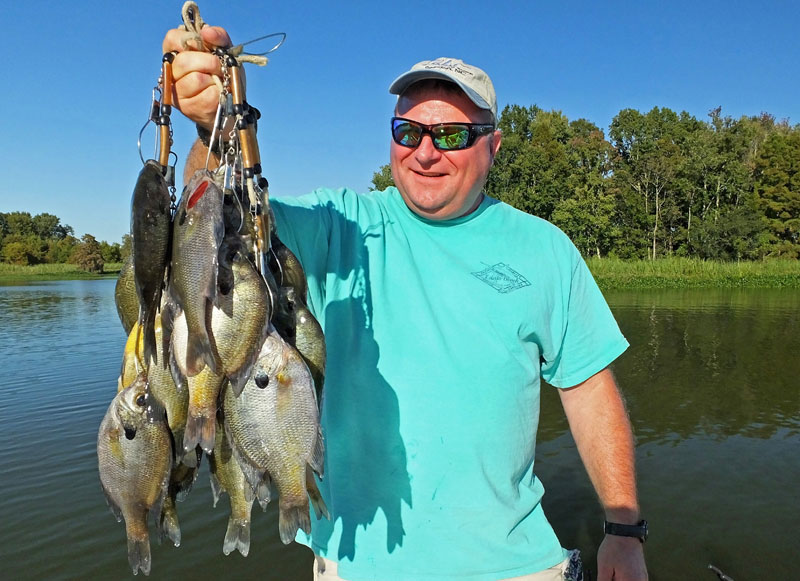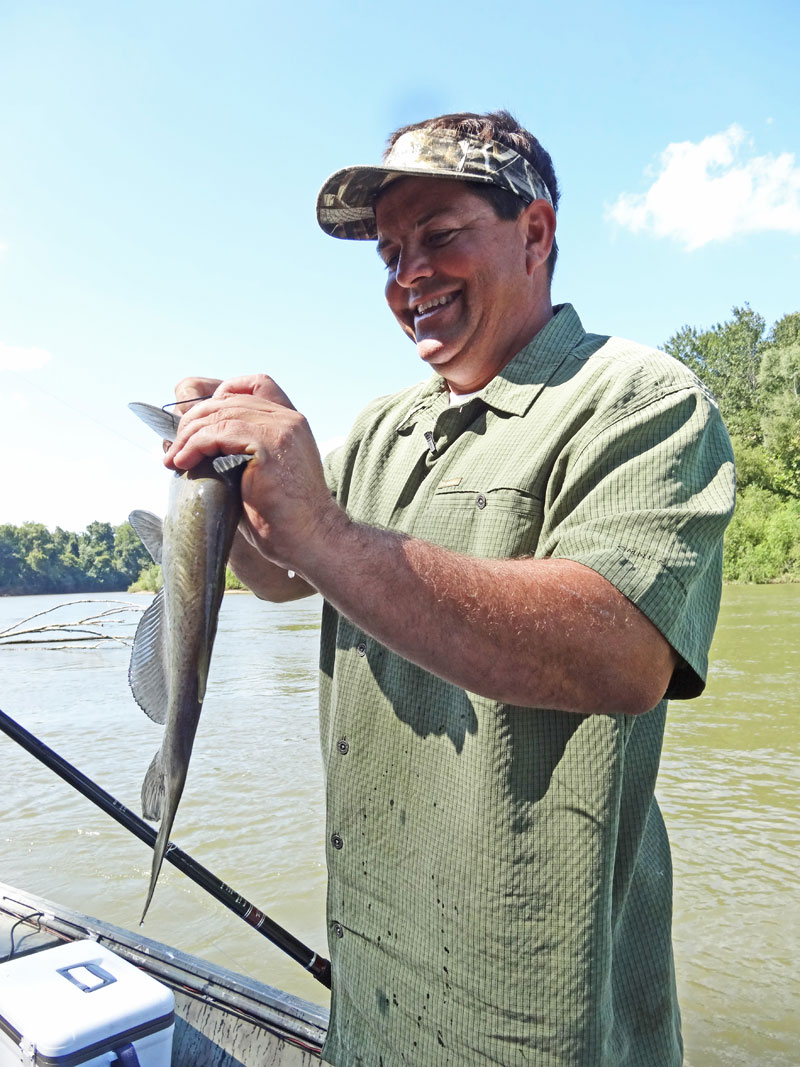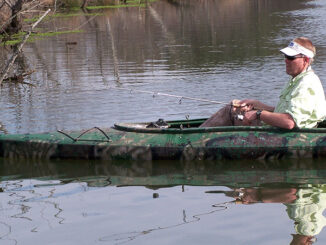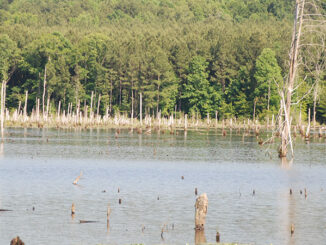
Hot air and rising water temperatures typical of July have most anglers working the early morning, late-afternoon and graveyard shifts when pursing various fish species at Santee Cooper.
And that’s an excellent fishing game plan. The scorching heat makes it difficult for anglers to stay comfortable and enjoy mid-day fishing. Fortunately, good fishing patterns exist for these low-light hours.
Monster Bream on Tiny Lures
Live bait is the ‘go-to’ tactic for many bream anglers throughout the summer. But artificial lures are also effective for limits of big, bull bream.
Dean Ilderton, a bream guru from St. George, S.C. said not all artificial lures are created equal for summertime fishing. He works patterns using the right lure in the proper situation for big bream.
“I can fish multiple types of bream habitat effectively and faster with artificial lures than I can using live bait,” he said. “This enables me to find feeding fish quicker. Plus artificial lures are particularly effective during the summer when bream are actively feeding early and late in the day.”
Ilderton said he’ll occasionally find an ongoing mayfly hatch. Anytime this occurs on Santee Cooper, the hunt for big bream is over. And bream catching begins.
“A good mayfly hatch provides extraordinary fishing for big bream whether using artificial or live bait,” he said. “Hatches occur throughout the summer. And sometimes I’m actively searching for them. But occasionally I’m simply working good bream habitat and literally fish my way right into the midst of a bream fishing mecca.”
Ilderton said a wide variety of artificial lures are lethal on bream including safety-pin type spinners, such as the Beetle Spin. Inline spinners, small jigs, tiny crankbaits and flyrods loaded with popping bugs or sinking flies are also great.
Ilderton said he uses a small version of the Beetle Spin, such as the 1/32 or 1/16 ounce size, because this lure is less prone to snag in the cover-rich bream habitat in Santee Cooper.
“I’ll use either 4- or 6-pound test line on spinning or spin-cast rigs. This lightweight rig enables me to cast long and accurately around heavy cover,” he said. “Accurate casting is a huge benefit everywhere I fish in the lakes. And especially in the confined spaces of fishing around cypress trees, weedbeds and anywhere in the Lake Marion swamps.”
A Summertime Diversion at Santee
Excellent catfishing opportunities abound during the summer on Santee Cooper. But one of the most productive places to be right now is the Diversion Canal. This 7-mile long canal linking the lakes provides sensational summertime catfishing.
Kevin Davis fishes out of Blacks Camp and is a veteran angler familiar with catfishing on both lakes Marion and Moultrie.
“With normal rainfall, the current flow is good at this time of the year. And that’s a key to the outstanding catfishing,” he said. “Catfish like current. And current attracts multiple species of catfish forage producing tremendous forage diversity.”
Davis said two primary fishing patterns exist – drifting and fishing from an anchored position.
“Drifting is an excellent tactic for daytime fishing,” he said. “I’ll drift with the current and hold my bait just off the bottom.”

Davis typically uses a 2-ounce weight to keep the line vertical. But during high current flow he may need more weight.
“I keep the line vertical and hover the bait about a foot off the bottom,” he said. “I’ll occasionally lower the rodtip, allowing the sinker to ‘tick’ the bottom to ensure I’m in the strike zone. The bottom of the canal is extremely snaggy. So dragging baits right on the bottom results in continuous snags.”
Davis said anchor fishing is excellent by day or night. Top locations include the deep holes along the canal bottom and where water flows into the canal from the shallow flats creating eddies.
“At night I’ll anchor where I can fish the shallow rims around the deep holes. But during the day I’ll set up so I can present my baits in the holes,” he said.
Davis said bait is crucial and it’s often based on the specific technique and time he’s fishing.
“Prime baits include gizzard shad, herring, bream, white perch and mullet,” he said. “I’ll experiment with various sizes of baits. But at night live bream and white perch are effective because big flatheads love live baits. And big blues will eat them too.”
One exception to this bait presentation is when mussels begin to die during hot weather and they float down the Canal.
“When this occurs, I’ll downsize bait size,” he said. “The meat from the mussels is small, about nickel size. And catfish feast on that food source. I literally match that bait size using nickel-sized chunks of blueback herring. It’s effective for all size classes of catfish.”
The Canal:
When you hear anglers who regularly fish the Santee Cooper lakes talk about the canal, it’s the Diversion Canal that connects the upper and lower lakes they’re speaking of. This canal is a hot spot for catfish during the heat of summer, especially when the current is flowing. Anglers can often catch all they want in the canal without ever wetting a line in either lake.





Be the first to comment